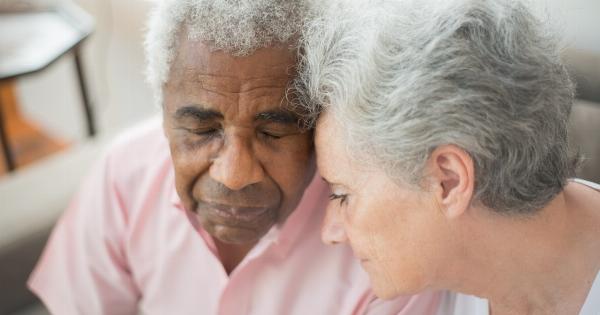As we journey through life, there are certain inevitable processes that occur, no matter how much we try to slow them down or evade their grasp. Two examples of such processes are aging and hair fall.
These two phenomena affect almost everyone, and understanding their causes can shed light on methods to mitigate their effects. In this article, we will take an illustrated tour of the causes of aging and hair fall, delving into the science behind these processes and exploring potential solutions.
The Aging Process: Unraveling the Mysteries
As we advance in years, our bodies undergo a multitude of changes. The aging process encompasses a complex interplay of genetic, environmental, and lifestyle factors.
While aging is a natural progression, several key factors contribute to its acceleration:.
1. Oxidative Stress and Free Radicals
Oxidative stress is a major player in the aging process. When our bodies are exposed to various stresses, such as pollution, UV radiation, and poor diet, free radicals are generated.
These highly reactive molecules damage cells, leading to accelerated aging. Antioxidants, found in fruits and vegetables, help combat oxidative stress and minimize its effects.
2. Telomere Shortening
Within our cells, there are structures called telomeres, which safeguard our DNA. However, each time a cell divides, these telomeres shorten. Eventually, the telomeres become critically short, leading to cell senescence or death.
Telomere shortening is considered a fundamental aspect of the aging process. Research is underway to explore ways to slow or reverse this shortening.
3. Hormonal Changes
As we age, our hormonal balance undergoes significant alterations. For instance, in females, the decline in estrogen production during menopause can lead to various physiological changes, including skin aging.
Similarly, in males, declining testosterone levels can contribute to hair loss and muscle loss. Hormone replacement therapies are available to alleviate some of these effects.
4. DNA Damage and Repair
Our DNA is constantly exposed to damaging agents, such as UV radiation and chemicals. Over time, this cumulative damage can overwhelm the body’s repair mechanisms, leading to genetic mutations and accelerated aging.
Strategies to enhance DNA repair capacity are an active area of research.
Decoding the Mystery of Hair Fall
While hair fall is a natural process, excessive hair loss can be distressing and impact self-esteem. Numerous factors contribute to hair fall, but understanding the underlying causes can pave the way for effective remedies.
Some of the primary reasons for hair fall include:.
1. Genetic Predisposition
Family history plays a crucial role in determining whether you will experience hair loss. Genetic factors can influence the sensitivity of hair follicles to hormones, leading to the miniaturization of hair and eventual balding.
However, genetic predisposition is not the sole determinant, and other factors can exacerbate or mitigate its effects.
2. Hormonal Imbalances
Hormonal imbalances, such as those associated with thyroid disorders or fluctuating hormone levels during pregnancy or menopause, can contribute to hair fall.
Addressing the underlying hormonal issue is often crucial in managing hair loss caused by imbalances.
3. Nutritional Deficiencies
Our hair requires a range of nutrients to maintain its health, strength, and vitality. Deficiencies in key vitamins and minerals, such as iron, biotin, zinc, and vitamin D, can lead to hair fall.
A balanced diet and supplementation may help address these deficiencies and promote hair growth.
4. Scalp Conditions
Various scalp conditions, such as dandruff, psoriasis, or fungal infections, can trigger excessive hair shedding. Treating these underlying scalp issues can often significantly reduce hair fall.
Good scalp hygiene and regular check-ups can help identify and manage such conditions.
Exploring Solutions: Aging and Hair Fall
While aging and hair fall are inevitable, there are several measures individuals can adopt to slow down their progress and mitigate their impact:.
1. A Healthy Lifestyle
Eating a balanced diet rich in antioxidants, getting regular exercise, maintaining a healthy weight, and avoiding smoking can all contribute to better overall health and slow down the aging process.
2. Stress Management
Chronic stress can exacerbate both aging processes and hair fall. Adopting stress management techniques such as yoga, meditation, or engaging in hobbies can help reduce stress levels and promote overall well-being.
3. Skincare and Haircare Regimens
Investing in a skincare routine that includes moisturizing, sun protection, and the use of anti-aging ingredients can help alleviate signs of aging.
Similarly, using gentle hair care products suited to your hair type, avoiding excessive heat or chemical treatments, and protecting hair from environmental damage can all contribute to maintaining healthy locks.
4. Medical Interventions
In cases where hair loss or aging signs are more advanced, medical interventions may be necessary. These could include hair transplant surgeries, hormone replacement therapies, or cosmetic procedures aimed at reducing the visible signs of aging.
Conclusion: Insights to Empower
Aging and hair fall are natural processes that affect the majority of individuals. By understanding the causes behind these phenomena, we can make informed choices to slow down their progression and reduce their impact.
Incorporating lifestyle changes, managing stress, and seeking appropriate medical interventions can empower us to embrace our aging selves and confidently face the challenges of hair fall.




























